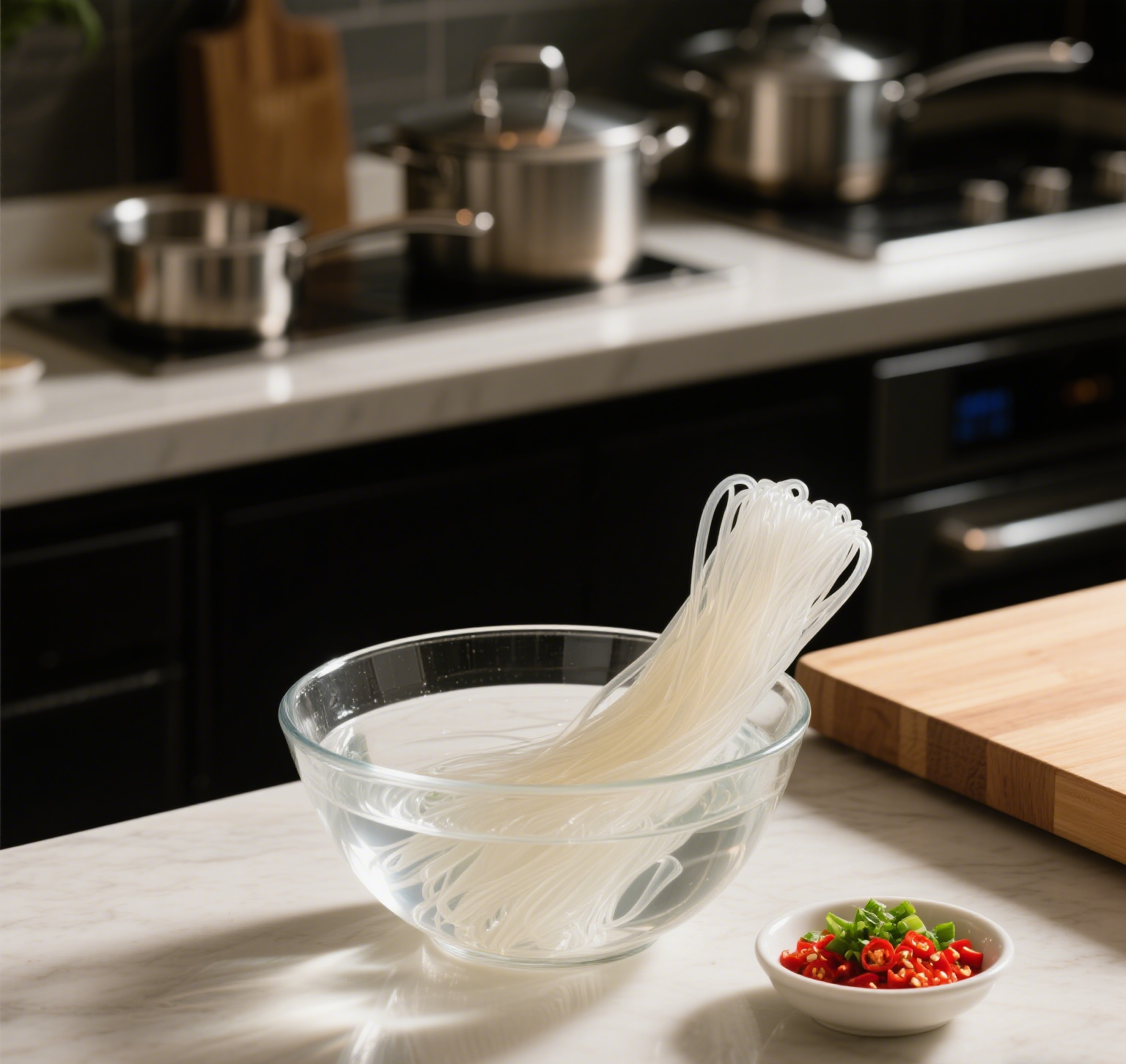The See-Through Secret of Asian Cuisine
Glass noodles are the Houdini of the pasta world – they disappear into boiling water as opaque strands only to reappear as glistening, translucent threads that could double as jewelry. But this culinary magic trick begins with the humblest of ingredients: the mighty mung bean.

The Main Attraction: Mung Bean Magic
These noodles go by many aliases – cellophane noodles, bean thread noodles, or “those see-through noodles in my pad Thai.” But their birth certificate reads:
- Primary ingredient: Mung bean starch (about 95%)
- Occasional guests: Sometimes blended with sweet potato or tapioca starch
- Surprise fact: Despite the name, there’s no actual glass involved (disappointing for collectors)
“Mung beans are the introverts of the legume world – quiet but packed with surprising talents when given the spotlight.”
From Bean to Sheen: The Transformation Process
- The Bean Bath: Mung beans soak until they’re plump and happy
- Starch Extraction: Beans get ground and filtered to isolate the pure starch
- Noodle Alchemy: The starch slurry is steamed into sheets, then cut into threads
- Sun Therapy: Traditional drying gives them that signature brittle texture
Fun fact: The entire process uses about 90% less water than wheat pasta production – glass noodles are basically the Tesla of noodles.
Why Chefs Love These Invisible Threads
Texture Triumphs
- Raw: Brittle sticks that snap like twigs
- Cooked: Silky-smooth with a satisfying bounce (noodle nerds call this “Q texture”)
Flavor Flexibility
Being nearly flavorless makes them:
- The ultimate sauce carriers
- Willing participants in both sweet and savory dishes
- Perfect for absorbing bold flavors like a culinary sponge
Cooking Superpowers
- Speed demon: Rehydrates in 5 minutes flat (perfect for weeknight dinners)
- Heat resistant: Won’t turn to mush in hot pots or soups
- Visual drama: Transforms dishes into edible stained glass
Pro tip: “Glass noodles are like good party guests – they show up on time, adapt to any situation, and never overshadow the host ingredients.”
Global Passport: Where These Noodles Shine
- China: Ants climbing trees (spicy pork with noodles)
- Korea: Japchae (sweet potato glass noodles stir-fry)
- Thailand: Yam Woon Sen (spicy glass noodle salad)
- Vietnam: Miến xào (stir-fried glass noodles)
Nutrition Facts That Might Surprise You
Per 100g cooked:
- Calories: About 90 (lighter than Italian pasta)
- Carbs: 22g (great for energy without heaviness)
- Protein: 0.5g (they’re carb specialists, not bodybuilders)
- Gluten-free: Naturally safe for celiac diners
Storage wisdom: Keep them dry and they’ll outlast your last diet resolution (2+ years shelf life).
The Bottom Line
Glass noodles prove that sometimes the most unassuming ingredients create the most culinary magic. Made from just mung bean starch and water, these transparent wonders offer texture without ego, adaptability without complaint, and visual drama without pretension.
Final thought: In a world full of opaque choices, isn’t it refreshing to find something deliciously transparent?
